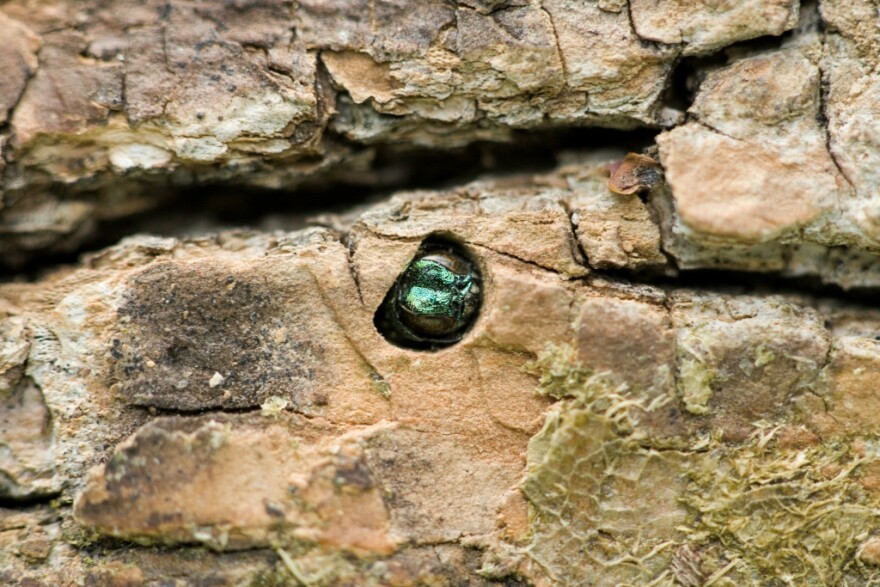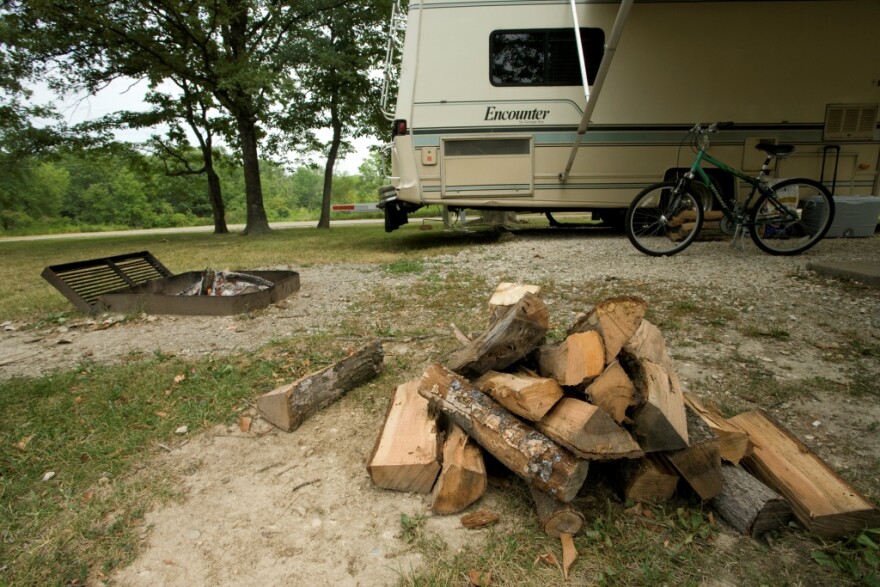An insect pest that has decimated ash trees in 25 U.S. states has now spread to St. Louis County. If left alone, the emerald ash borer will eventually kill any tree it attacks.
The destructive green beetle was first detected in our area last year, in St. Charles County, and was found in north St. Louis City this past spring. In mid-August, it was confirmed in Creve Coeur.
According to Missouri Department of Conservation spokesperson Dan Zarlenga, all the ash trees in our region are at risk. “The inevitability of the emerald ash borer is once it establishes itself in an area, pretty much every untreated ash tree will eventually succumb to the beetle," Zarlenga said. "So it’s not really a matter of if, it’s more a matter of when.”
The beetles tunnel under the bark of ash trees, disrupting the flow of water and nutrients and ultimately killing the tree.

It's too late to do anything about an infestation this year, because the insecticides used to kill emerald ash borers work best in the spring and early summer. But Zarlenga said anyone who owns an ash tree should decide now whether they want to replace it with a different species or treat it — which can be costly. "Anywhere from as little as around $25 for a do-it-yourself treatment for a smaller tree, to several hundred dollars for a larger tree that must be professionally treated," Zarlenga said. And the insecticide applications have to be repeated every one-to-three years, for the life of the tree.
The larvae of emerald ash borers make a characteristic D-shaped hole in a tree's bark, but it's best to have a professional arborist confirm an infestation and whether a tree can be saved.

Zarlenga said other than replacing or treating infested ash trees, the best way people can help slow the spread of the emerald ash borer is to not move firewood from place to place. "These creatures hide in firewood," Zarlenga said. "If you get firewood in one area of the state that is infested, and you transport that firewood to an area that isn’t, you’re basically giving the bug a free ride."
Zarlenga said campers in particular should buy their firewood locally and burn it all before leaving the area. Emerald ash borers were first found in Missouri at a campground in 2008. All Missouri counties are currently under state and federal quarantine, making it illegal to move ash trees or their wood out of state.
The emerald ash borer is an invasive species originally from Asia. It has killed tens of thousands of ash trees in the U.S. since it was first discovered here in 2002.
For science, environment and health news, follow Véronique LaCapra on Twitter: @KWMUScience



